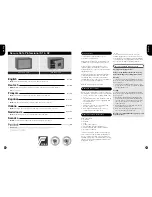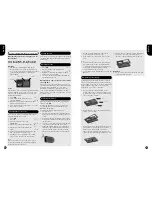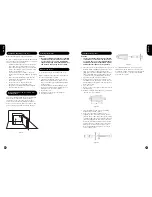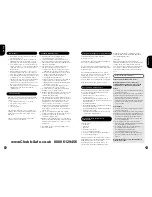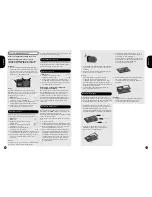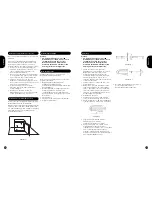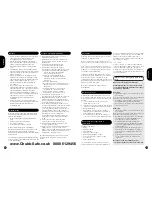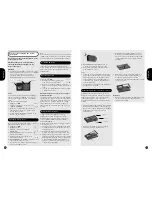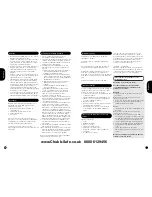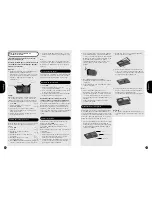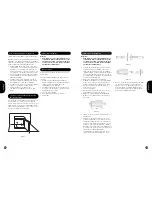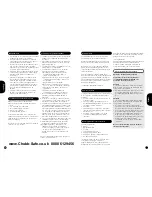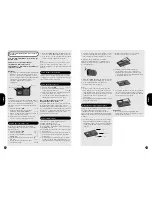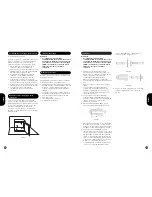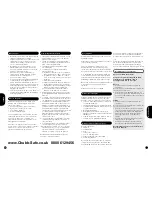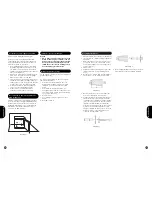
Installation instructions
Attention
•
In order to fulfil the requirements of the EN
certification your safe must be anchored to
a concrete floor or a concrete wall with the
supplied anchoring bolts (minimum 2 bolts)
and washers through the holes provided.
1. Place the safe in the position you have selected.
Before marking or drilling any holes ensure that
there are no pipes or cables present at the
fixing points. If there is skirting board present at
the desired fixing point, this should be removed
to allow the safe to be fitted flush to the wall.
2. Open the safe and remove any shelves.
3. Using a pencil or a sharp object, mark out the
two drill holes; use the bottom or back holes as
provided (remove the plastic caps on bottom or
back if necessary).
4. Close the safe.
5. Now move the safe to give enough room to drill
the fixing holes.
6. Drill holes - 80 mm deep (figure 2): you will need
the 13 mm concrete drill bit.
Figure 2
7. Clear the drill holes and remove any drilling
debris using a vacuum cleaner.
8. Secure the safe using the fixing screws
supplied. Do this as follows: unscrew the bolt
from the sleeve, slide the washer over the fixing
screw then slide the screw and washer through
the hole provided in the safe (back or bottom).
Screw the metal plug and sleeve back on then
position the safe so that the sleeves fully enter
the holes in the wall or floor. Using a socket
wrench, fully tighten the screws to secure the
safe (see figure 3 & 4).
Figure 3
Figure 4
9. On a double-walled safe, you can cover the
fixing holes with the plastic covers. This is not
possible on a single-walled safe. The two plastic
caps can be used to cover any unused fixing
holes from the outside.
06
07
English
English
Positioning and fixing of the safe
Where should I place my free-standing safe?
No safe is completely thief-proof. With time and the
right tools any safe can be broken into, so it makes
sense to observe the following:
1. It is important that the safe is as inconspicuous
as possible. We recommend that you never
place the safe anywhere where it is visible from
outside. For example, place your safe in a cup
board or in the utility room.
2. If you have electronic security i.e. an alarm,
the safe is best positioned within the protected
room.
3. Place the safe with the hinge away from the
wall as this makes it harder to pry the door
open on the lock side.
4. Position the safe as near to the floor as
possible in case of an outbreak of fire.
5. Keep keys and combination numbers hidden
and away from the safe.
How and with what can I secure my free-
standing safe?
Your safe is equipped with two holes in the bottom
and two holes in the back. Using the fixings
supplied, you can secure the safe to the floor
and/or to the wall. For a detailed description of
how to secure your safe, please see figure 1. This
gives a step by step guide to securing the safe.
Figure 1
Securing instructions
Attention
•
In order to fulfil the requirements of the EN
certification your safe must be anchored to
a concrete floor or concrete wall with the
supplied anchoring bolts (minimum 2 bolts)
and washers through the holes provided.
What do you need?
To secure the safe you need fixings and tools.
Before starting to secure the safe, check that you
have the following items to hand:
1. The fixing set supplied. This set consists of:
fixing screws, metal washers, plastic covers /
caps (covers and caps could already be fitted
by the factory).
2. An electric (hammer) drill. The fixing holes in
the base material need to be drilled first. You
will need a 13 mm concrete drill bit.
3. A socket wrench.
4. A vacuum cleaner to clear the drill holes.
5. Possibly a hammer.
Summary of Contents for PS1-32E
Page 24: ...46 47 ...
Page 25: ...48 49 ...


